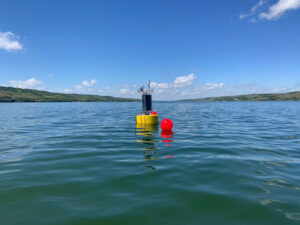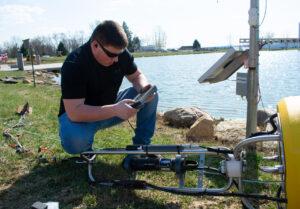Thermo Orion Standard Ammonia Electrode
Features
- Reliable results at mid to high ammonia levels
- Gas-sensing electrode used to measure the ammonium ion after conversion to ammonia
- Extra membranes and electrode filling solution
- Free ground shipping
- Expedited repair and warranty service
- Lifetime technical support
- More
Overview
The Thermo Orion standard ammonia electrode allows fast, simple, economical and accurate measurements of dissolved ammonia in aqueous solutions. The Thermo Orion standard combination ammonia electrode includes a waterproof BNC connector and 1m cable.
Mechanics
This gas-sensing electrode can also be used to measure the ammonium ion after conversion to ammonia, or organic nitrogen after Kjeldahl digestion of the sample. Sample color and turbidity do not affect the measurement, and samples need not be distilled. Almost all anions, cations, and dissolved species, other than volatile amines, do not interfere. The Thermo Orion standard combination ammonia electrode, including waterproof BNC connector and 1m cable.
Includes
The standard ammonia electrode comes with:
- Forty loose membranes
- One cap for loose membranes
- Tweezers for handling membranes
- One white dispensing cap
- 60 mL electrode filling solution
- Instruction manual
- Construction: Gas sensing combination
- Measurement Range: 1.0 to 5 x 10-7 M / 17,000 to 0.01 ppm
- Temp Range: 0 to 50 C
- Required Reference Electrode: Included
- Reference Filling Solution: 951202
- Calibration Standards: 0.1 M NH4Cl (951006)
- Required ISA: 951211
- (1) Standard ammonia electrode
- (40) Loose membranes
- (1) Reusable membrane cap
- (1) 60mL bottle of electrode filling solution (951202)
- (1) Spout cap
- (1) Tweezers
- (1) 1m cable
In The News
Applied Research and Innovative Solutions: Creating CHNGES at Western Kentucky University
Long-standing environmental monitoring programs have the power to support a large number of research initiatives and policy changes—however, actually starting these networks can prove challenging. Not only is starting the program difficult, but keeping things operational for decades to come has also been challenging for environmental professionals hoping to make an impact with applied research. Jason Polk, Professor of Environmental Geoscience and Director of the Center for Human GeoEnvironmental Studies (CHNGES) at Western Kentucky University, is all too familiar with this process.
Read MoreCombating Water Insecurity in Saskatchewan with Real-Time Data
The prairies of Saskatchewan can be described as one of the least water-secure parts of Canada, making water quality monitoring essential for informed resource management in a region already facing water insecurity. While natural physical properties worsen some of the poor water quality conditions in the region, others are connected to land use. Having grown up spending summers on the shores of Lake Huron, Helen Baulch, an associate professor at the School of Environment and Sustainability at the University of Saskatchewan , has always been dedicated to the protection of water resources. Looking back fondly at her childhood playing along the shore, Baulch also recalls the invasion of quagga mussels during her teenage years and watching the lake change as a result.
Read MoreSeametrics Turbo Turbidity Logger: Boost your Turbidity Monitoring
The Seametrics Turbo Turbidity Logger is a self-cleaning turbidity sensor capable of internally logging over 260,000 data records. The sensor enables researchers, compliance officers, and contractors to monitor turbidity in various applications, from construction and dredging sites to wastewater effluent. Due to its narrow width, this device can be deployed in a range of areas, from small well spaces to rivers and streams. The stainless steel housing and built-in wiper allow the sensor to withstand long-term deployments and reduce the need for maintenance trips. The logger accurately records temperature and turbidity up to a depth of 50 meters.
Read More















